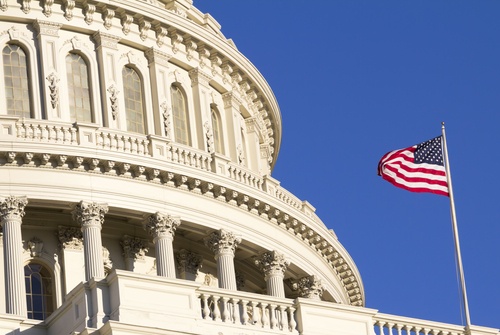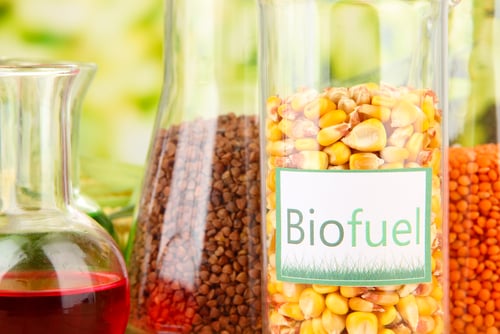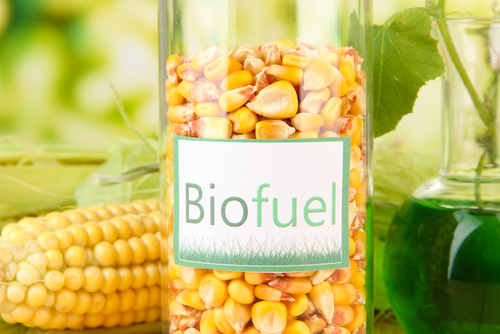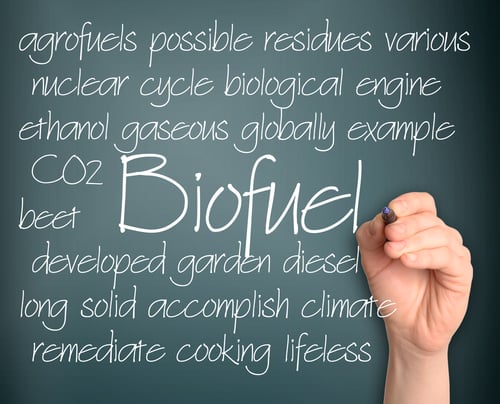University of Maine students experimenting with salt and high temperatures appear to have stumbled upon a way to create a sulfur free crude oil from wood pulp.
ESG & Industry Updates
Maine is Making Crude from Waste Wood (and it's Kind of a Big Deal!)
Posted by Ed Burke on Sep 5, 2019 11:40:17 AM
Topics: Waste Feedstock Biodiesel, Cellulosic Ethanol, RFS, renewable energy
Low commodity prices, plummeting RIN values, and talk of potential trade wars are all factors hitting the US Agricultural Sector hard this year.
EPA Finalizes 2018 RFS Volume,Declines Obligated Party Change Proposal
Posted by Ed Burke on Dec 1, 2017 5:22:05 PM
Yesterday (November 30th) the EPA finalized renewable volume obligations for the RFS for 2018 and the RVO levels for 2019.
Topics: EPA Mandate, RINs, Biofuels, Cellulosic Ethanol, EPA, RFS
EPA's 2017 RFS Volume Proposal Draws Familiar Concerns
Posted by Ed Burke on Jul 20, 2016 8:20:00 AM
Topics: EPA Mandate, Biofuels, RFS
As of November, the EPA finally released its final renewable volume obligations for 2014, 2015, and 2016.
Topics: Ethanol, Biofuels, RFS, renewable energy
This week, Ethanol activists in Chicago used the 20th anniversary of the BP Oil Spill in the Gulf to push for approval of a pending mandate that would require self-serve stations with over 850,000 gallons in annual sales volumes to carry E15, given they had the proper infrastructure for the blend. They argued that companies will "keep on spilling" and that made it imperative that the push continue towards higher blended, "cleaner" ethanol.
Topics: Ethanol, EPA Mandate, Cellulosic Ethanol, RFS
In November the EPA announed it would not be able to finalize on the RFS volumes for biofuels until 2015. The 2014 and 2015 volumes will be set soon,, in theory. But there has been a lot of stress out there in the industry over the fact that the delay will essentially mean refiners and producers need to be retroactively compliant with the volumes the EPA sets.
The biofuels industry is pushing for an increase in biofuel requirements, to 18.15 billion gallons. This is probably not happening, but the uncertainty overall has had a serious impact on bio producers, many of whom have scaled operations way back over 2014 as compared to 2013.
Topics: Biodiesel, EPA Mandate, EPA, RFS
Main energy topics in the headlines for 2014 include the Crude Export Ban, the Keystone Pipeline, the Climate Change Action Task Force, RFS Volumes, and an expected final ruling on the Tier III mandate from the EPA.
Topics: Energy Independence, Biodiesel Tax Credit, EPA Mandate, US Crude Exports, Cellulosic Ethanol, Keystone XL, RFS, obama
Grassy Hillsides plowed into crop rows. Millions of acres of conservation land converted to corn fields. Fertilizer runoff polluting lakes and streams. All to produce a "green" fuel source.... Or that's the picture painted by an AP article slash expose anyway.
Topics: E85, Ethanol, EPA Mandate, RINs, Biofuels, EPA, Blend Wall, RFS
Environmentalists & Oil Exec's Unite on RFS Volume Reduction
Posted by Kelly Burke on Jan 14, 2014 9:47:00 AM
Topics: Oil & Energy Magazine, Ethanol, EPA Mandate, Biofuels, EPA, RFS
Subscribe to Email Updates
Recent Posts
Posts by Topic
- Carbon Emissions (42)
- Climate Change (32)
- renewable energy (31)
- Oil & Energy Magazine (27)
- EPA (24)
- Massachusetts (21)
- Biden Administration (18)
- decarbonization (15)
- Biodiesel (12)
- natural gas (12)
- EPA Mandate (11)
- RFS (11)
- Solar (11)
- Biofuels (10)
- Keystone XL (10)
- methane (10)
- offshore wind (9)
- Clean Energy (8)
- Energy Independence (8)
- Energy Infrastructure (8)
- Safety (8)
- Biodiesel Tax Credit (7)
- Emissions (7)
- Ethanol (7)
- ev (7)
- Cellulosic Ethanol (6)
- EV Charger (6)
- RINs (6)
- Trump Administration (6)
- environmental justice (6)
- Fracking (5)
- Inflation Reduction Act (5)
- Technology (5)
- US Crude Exports (5)
- electric vehicles (5)
- maine (5)
- tesla (5)
- ACT (4)
- Mass DOER (4)
- TransCanada (4)
- Utility Rates (4)
- battery (4)
- fuel management (4)
- massachusetts biodiesel mandate (4)
- obama (4)
- paris accord (4)
- remote tank monitoring (4)
- CARB (3)
- CRUDE (3)
- Carbon Capture (3)
- Clean Fuel Production Credit (3)
- E85 (3)
- Emergency Fuel (3)
- Massachusetts Clean Cities (3)
- Waste Feedstock Biodiesel (3)
- china (3)
- clean power plan (3)
- net-zero (3)
- renewable diesel (3)
- solid state battery (3)
- AI (2)
- AVs (2)
- Bioheat (2)
- Commodities (2)
- Congress (2)
- Customer Service (2)
- DOT (2)
- EIA (2)
- Emergency Generator Program (2)
- HFCs (2)
- Hurricane Sandy (2)
- IMO 2020 (2)
- MIT (2)
- Marinas (2)
- New York (2)
- Refinery Closures (2)
- Safe Driving Policy (2)
- TCI (2)
- US Energy Boom (2)
- ZEV (2)
- autonomous vehicles (2)
- clean air act (2)
- coal (2)
- driver shortage (2)
- electricity rates (2)
- emergency response (2)
- environment (2)
- ferc (2)
- geothermal (2)
- hydro-electric (2)
- hydrogen (2)
- national grid (2)
- net metering (2)
- power plant emissions (2)
- railcar regulations (2)
- tariff (2)
- vineyard wind (2)
- API (1)
- Air conditioning (1)
- Baiji Refinery (1)
- Blend Wall (1)
- Brent Crude (1)
- Brent vs WTI (1)
- CFCs (1)
- Cell Phone Policy (1)
- Clean Water Act (1)
- DEF (1)
- Election Results (1)
- Electrical Grid (1)
- Energy Efficiency (1)
- Environmental Impact Study (1)
- Environmentally Friendly Products (1)
- Ethanol Tax Credit (1)
- FEMA (1)
- Fiscal Cliff (1)
- Gas Tax (1)
- Gasoline Supply Crunch (1)
- HDVC (1)
- Hazmat (1)
- Heat Tax (1)
- Highway Trust Fund (1)
- Holyoke (1)
- Hybrid (1)
- ISIS (1)
- Iraq (1)
- Kigali Amendment (1)
- MOC (1)
- Market analysis (1)
- Mayflower (1)
- Montreal Protocol (1)
- NORA (1)
- Natural Gas Pipeline Explosion (1)
- New Jersey (1)
- Oil Barrel Tax (1)
- PFC (1)
- Pegasus Pipeline (1)
- Propane Autogas (1)
- Stimulus (1)
- Syria (1)
- Tank Truck Safety Training (1)
- Tax Increases (1)
- Tier 3 Gasoline Standard (1)
- Times Square (1)
- VEEP (1)
- Workplace Risk (1)
- agriculture (1)
- algonquin pipeline (1)
- alternative energy (1)
- altwheels (1)
- astm (1)
- bionic leaf (1)
- bitcoin (1)
- boston (1)
- clean heat standard (1)
- covid-19 (1)
- energy storage (1)
- eversource (1)
- export ban (1)
- fixed pricing (1)
- fuel (1)
- fuel efficiency (1)
- fuel marketers news (1)
- gas leaks (1)
- heating oil (1)
- hurricane harvey (1)
- inflation (1)
- irving oil (1)
- marketing (1)
- nuclear (1)
- online fuel buying (1)
- ozone (1)
- photovoltaic (1)
- pilot program (1)
- pipeline (1)
- power plants (1)
- propane (1)
- renewable natural gas (1)
- russia (1)
- sanctions (1)
- senate (1)
- shale (1)
- social media (1)
- social media for business (1)
- space (1)
- tablets (1)
- tennessee pipeline (1)
- ukraine, (1)
- value added services (1)






